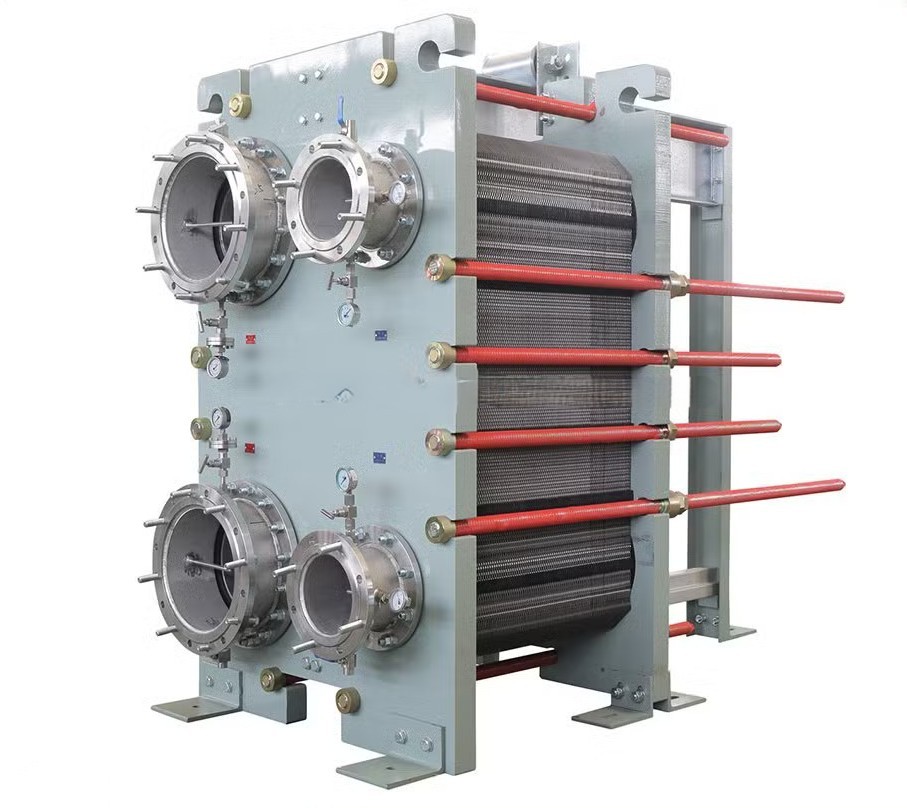Introduction
Sulfuric Acid Dilution System is an industrial setup specifically designed to dilute concentrated sulfuric acid (H₂SO₄) safely and efficiently while managing the significant heat generated during the process. Sulfuric acid is one of the most widely used industrial chemicals, playing a crucial role in manufacturing, water treatment, battery production, and more. However, diluting sulfuric acid is an exothermic process, meaning it releases a large amount of heat, which can lead to boiling, splashing, equipment damage, and serious safety hazards if not properly controlled. To mitigate these risks, modern sulfuric acid dilution systems incorporate advanced heat exchangers, corrosion-resistant materials, precise flow control mechanisms, and automation to ensure a safe, efficient, and reliable dilution process. These systems play a vital role in industries where specific acid concentrations are required for different applications.
Working Principle of Sulfuric Acid Dilution System
- Acid and Water Mixing
- In industrial applications, sulfuric acid is often stored in highly concentrated forms, such as 98% or 96% H₂SO₄. However, many industrial processes require it in lower concentrations (e.g., 30%, 50%, or 70%).
- To achieve the desired concentration, the system introduces concentrated acid into a controlled water stream rather than adding water to acid, which can cause violent reactions and splashing due to the sudden release of heat.
- The process involves carefully metering both acid and water flow rates using automated control valves and precision flow meters.
- Heat Dissipation & Cooling
- Since the dilution of sulfuric acid releases a significant amount of heat, the system must manage this heat effectively to prevent overheating, acid decomposition, or damage to equipment.
- Heat exchangers (such as plate-type, shell-and-tube, or immersion coil exchangers) help absorb and dissipate this heat efficiently.
- Some high-capacity systems use cooling towers, chilled water loops, or air-cooled heat exchangers to maintain safe operational temperatures.
- Flow Control & Metering
- The system employs flow meters, pH sensors, and automated control valves to ensure the precise acid-to-water ratio, thereby achieving accurate dilution without excessive heat generation.
- PLC-based automation allows operators to set specific dilution ratios and monitor process parameters remotely.
- Corrosion-Resistant Materials
- Since sulfuric acid is highly corrosive, all components in contact with the acid must be made from chemical-resistant materials.
- Common materials used include:
- PTFE (Polytetrafluoroethylene) – Highly resistant to acid corrosion.
- PVDF (Polyvinylidene Fluoride) – Used in piping and valves for durability.
- Graphite – Used in heat exchangers for its resistance to acidic environments.
- Titanium & Hastelloy – Ideal for extreme chemical resistance in heat exchangers and storage tanks.
- SS 316L & SS 904L – Stainless steel grades used for moderate corrosion resistance.
- Storage & Distribution
- Once diluted, the acid is stored in corrosion-resistant tanks made of FRP (Fiberglass Reinforced Plastic), HDPE (High-Density Polyethylene), or lined steel tanks.
- From here, it is distributed to different industrial processes via acid-resistant piping and automated pumping systems.
Key Components of a Sulfuric Acid Dilution System
- Acid and Water Inlet System
- Designed to precisely control the introduction of concentrated acid and water.
- Equipped with flow control valves, precision pumps, and non-return valves to prevent backflow.
- Static or Dynamic Mixer
- Ensures homogeneous mixing of sulfuric acid and water to prevent localized overheating.
- Static mixers use internal baffles, while dynamic mixers rely on mechanical agitation.
- Heat Exchanger
- Helps dissipate excess heat generated during dilution to prevent dangerous temperature spikes.
- Common types include plate heat exchangers (PHE), shell-and-tube exchangers, and immersion coil exchangers.
- Control Valves & Flow Meters
- Ensure precise control of acid and water flow rates.
- Automated systems adjust flow rates dynamically based on process requirements.
- Safety Features
- Emergency shut-off valves to stop acid flow in case of system failure.
- Temperature and pressure sensors to monitor process conditions.
- Spill containment and neutralization systems for accident management.
- Corrosion-Resistant Piping & Tanks
- Made from PTFE, PVDF, FRP, graphite-lined steel, or titanium to withstand long-term exposure to sulfuric acid.
- Automation & Control Panel
- PLC (Programmable Logic Controller)-based system for real-time monitoring and automation.
- Allows remote control, data logging, and alarm notifications for safer operation.
Applications of Sulfuric Acid Dilution Systems
- Chemical Manufacturing – Producing various industrial chemicals that require precise acid concentrations.
- Water Treatment Plants – Used for pH adjustment, wastewater treatment, and chemical dosing.
- Battery Production – Essential in lead-acid battery manufacturing and maintenance.
- Fertilizer Industry – Involved in processing phosphates and ammonia-based fertilizers.
- Mining & Metallurgy – Used for ore processing, leaching, and metal refining.
- Pharmaceutical Industry – Required in controlled acid dilution for drug manufacturing and synthesis.
Conclusion
Sulfuric Acid Dilution System play a critical role in industrial processes where precise acid concentrations are required for different applications. Due to the exothermic nature of acid dilution, these systems must be designed with proper heat dissipation, corrosion-resistant materials, and automated controls to ensure safe, efficient, and reliable operation. Industries that depend on sulfuric acid dilution systems benefit from enhanced process control, improved safety, and reduced maintenance costs. Investing in a well-designed system ensures consistent acid quality, compliance with industrial safety standards, and long-term operational efficiency.

